Before we start with the recipe, I would like to give you a little piece of information about Thai Kaeng. There are two types of soups in Thai cuisine. One is “Tom” and one is “Kaeng” . Tom, as in “Tom Yum” or “Tom Kha” , is a type of soup that doesn’t need “Krueang” (เครื่อง), the paste made from herbs and spices, created either as a curry paste or just a simpler “Thai Trio”, which consists of garlic, pepper and cilantro root.
The character of “Tom” (Tom=boil) is soup-like, either using coconut milk as a base or water (or soup stock), with chunks of herbs such as lemongrass, galangal, kaffir lime leaves, garlic, shallots, etc… It could be just one of them or many. You can see these recipes for Tom Yum Goong , Tom Kha Lobster for a better understanding. Tom Yum is the soup, i.e, water, base, and Tom Kha has the coconut milk base.
There are more Tom, such as Tom Khlong ต้มโคล้ง, Tom Jued ต้มจืด, Tom Som ต้มส้ม, Tom Sab ต้มแซ่บ, and I’m sure there are more that I forgot. I will get around to these sometime later.
Now back to the other soup, Kaeng. “Kaeng” is also a soup with either a water (stock) or coconut milk base, but most Kaeng needs a paste to kickstart the flavor. That’s why we’re making the curry paste, or “Krueng Kaeng = the blend of herbs and spices as a base of a soup” (เครื่องแกง) here.
This distinction I’m making may not exactly be a rule. I am not sure, because this is what I have been told from my aunts (many of them) from whom I learned the basics of Thai cooking by observing them cook. But I’ve already seen a lot of exceptions already. Kaeng Choo Chee and Kaeng Panaeng are the first two exceptions, because both have a gravy-like curry when most Kaeng are the soup-like curry, as I explained in the previous blog.
Choo Chee curry is always paired with seafood, (even though I think it would be more accurate to call them swimming foods!) The seafood is cooked separately however you like—poached, grilled, steamed, fried or batter-fried—then the Choo Chee curry is poured on top.
I’ve never seen Choo Chee curry served with land animal meat. I guess it’s because the curry paste doesn’t contain any spice that Thai people like to add to cover the “game” smell of land animals. A good Choo Chee curry will have a very prominent coconut smell with some red coconut oil on top.
Ingredients for 2
Kaeng Choo Chee curry paste 1/4 cup (Note #1)
Coconut cream 1 cup (Note #2)
Coconut oil (or other vegetable oil if you can’t find it) 1-2 tablespoons; THIS IS OPTIONAL, in case you can’t get coconut cream. Please read Note #2 for a better understanding.
Seafood–your choice; just enough for two people. I used 2 pieces of wahoo fish, about 12 oz. total.
Palm sugar 1-2 tablespoons
Fish sauce 2-4 tablespoons
Chiffonaded Kaffir lime leaves 1 tablespoon (about 2 -3 leaves)
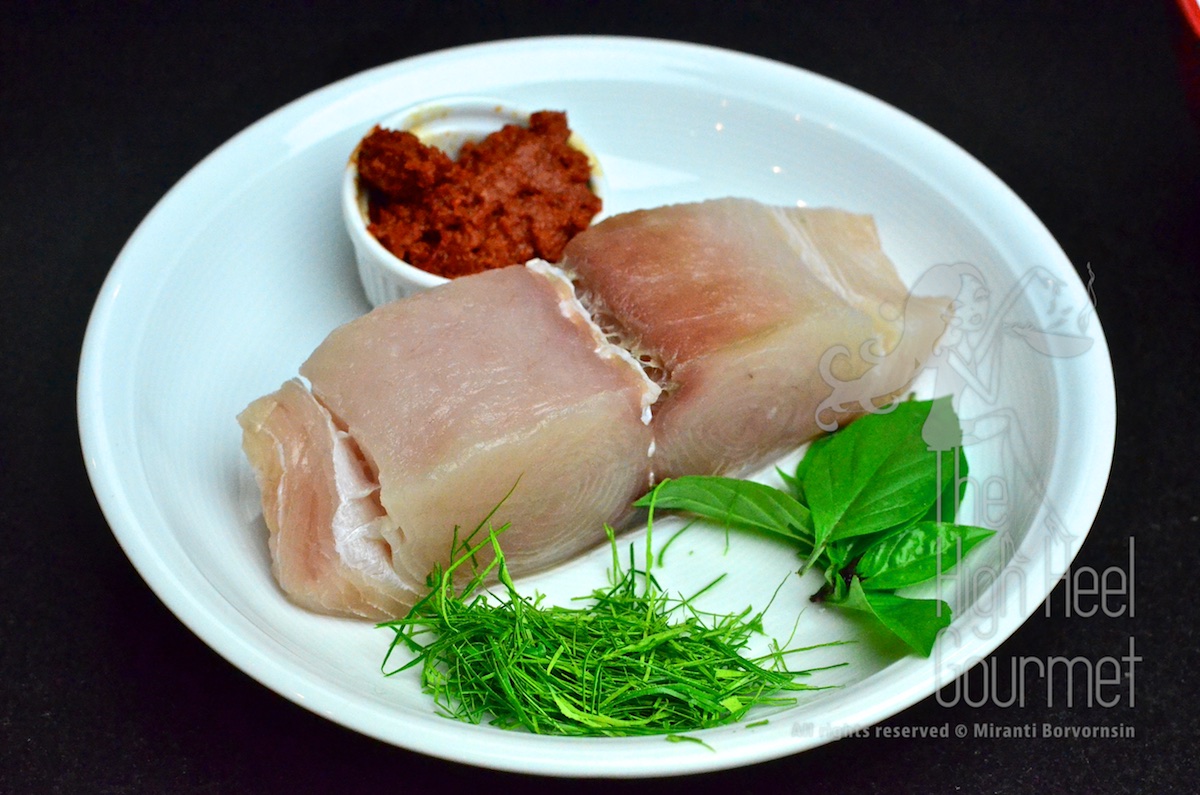
In this picture the chiffonaded kaffir lime is an important ingredient, but the Thai basil is only for decoration.
NOTE
1) You can either use the Choo Chee curry paste made with the instruction from my earlier blog “Advanced Red Curry Paste”
or you can buy the ready-made one. If you buy the ready-made curry paste, check if it contains roasted coconut. If it doesn’t, you should add it to the paste. Instruction for this is also in my last blog.
2) Do not shake the can of coconut milk before you open it. The hard white part at the top is the coconut cream. If the coconut milk you bought has been shaken or isn’t separated, you can try putting the coconut milk in the refrigerator for an hour. You should have the coconut cream floating up on the top. If the cream doesn’t float, I recommend changing the brand of coconut milk next time. It contains either too much flour or binding agent.
The reason that I use only the coconut cream is because I don’t want to spend my evening boiling down the water from the coconut milk. If you have no way to separate them, you can use the coconut milk as is, but know that your curry is either not going to “break”, giving you coconut oil, or you might have to boil it for a while longer to get the proper consistency. No big deal.
Method
1) Clean and prepare the seafood of your choice. I fried my wahoo fish.
2) Put coconut cream in a pot or a wok, set it over medium high heat and wait until the coconut cream is bubbling and, if your coconut cream can “break” and give oil, wait until that happens.
If you’re using coconut milk that has a stabilizer such as xanthan gum, gour gum or some type of flour added, the coconut milk will never break. In that case, I suggest you add about 1-2 tablespoons of coconut oil in your coconut milk.
If you want to know why I am so insistent on the coconut milk breaking, please visit the “Thai Curry Paste Episode III: Making a Pot of curry” to see why.
3) Add the curry paste to the wok and lower the heat to medium.
You don’t want to burn the roasted coconut flakes in the curry paste. Fry the curry paste until it’s back to bubbling again and continue to stir for the next two minutes.
Add more coconut cream if the contents get too thick.
4) Add the fish sauce and palm sugar, mix until they’re well blended and taste the sauce. Adjust the taste to your preference.
5) Pour the sauce over your prepared seafood.
6) Add the chiffonaded kaffir lime leaves and sliced red chili on top.
Choo Chee can be served with steamed rice, bread, or roti, and cooked vegetables. Delicious!!
The next I’ll tell you how to make Panaeng curry–don’t miss it!

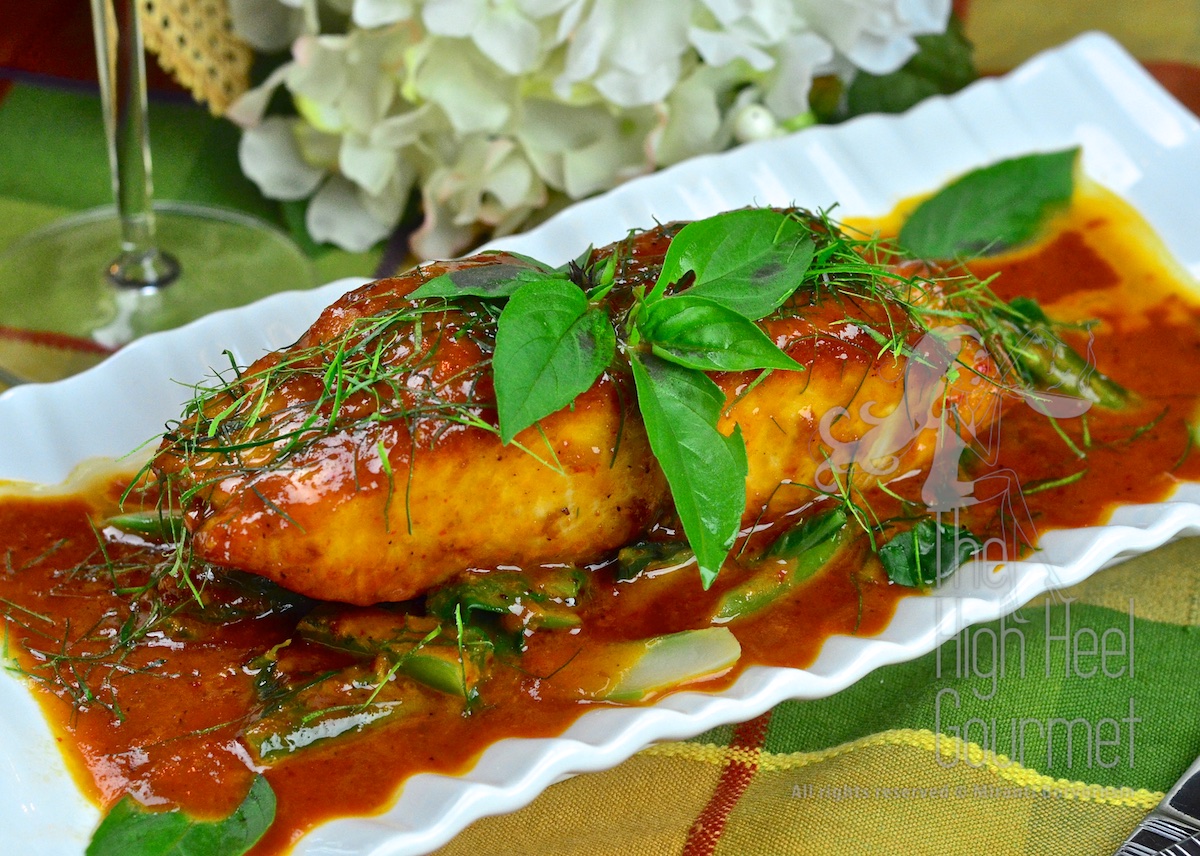
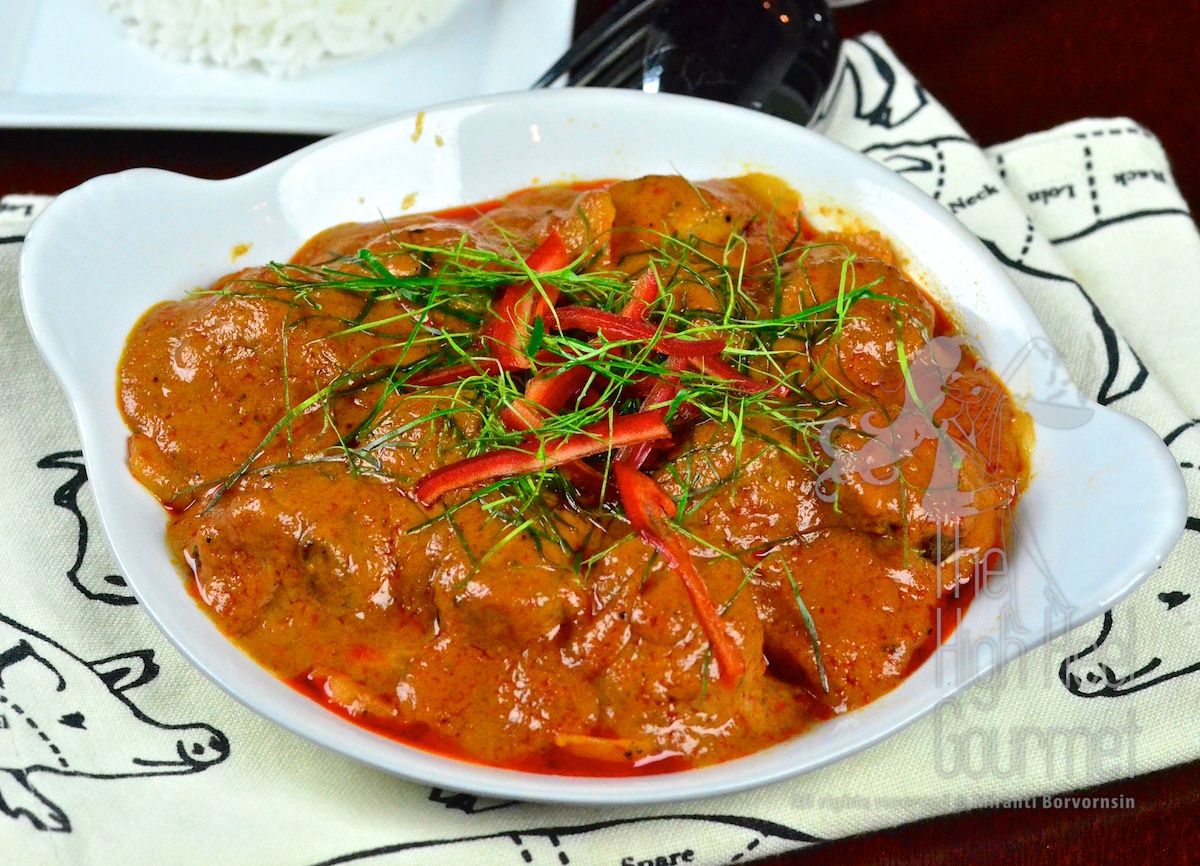
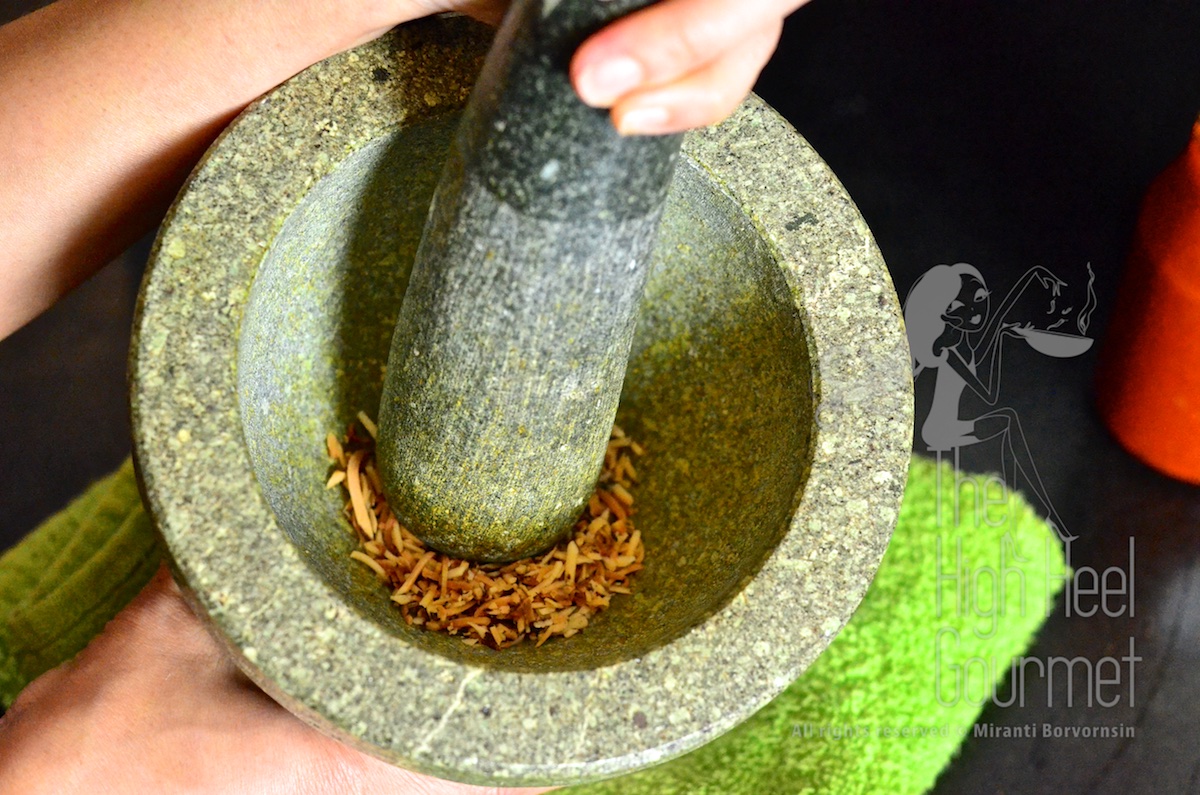
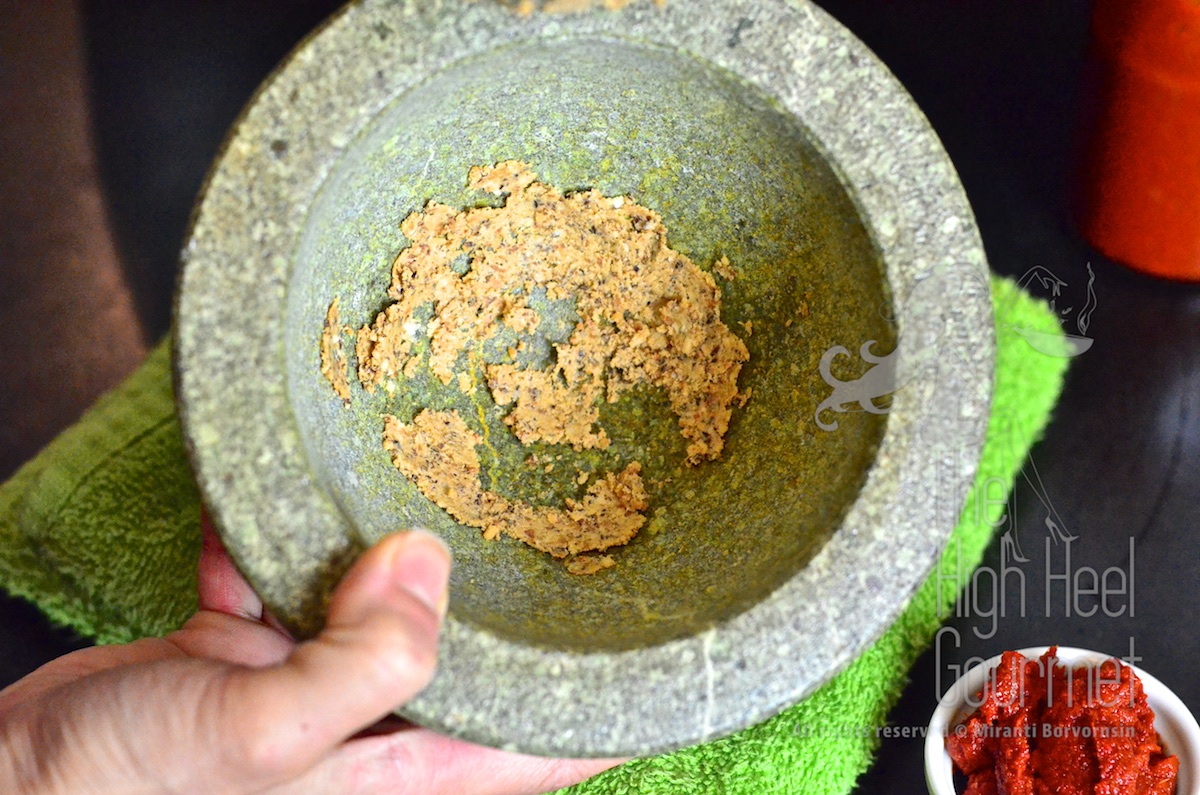
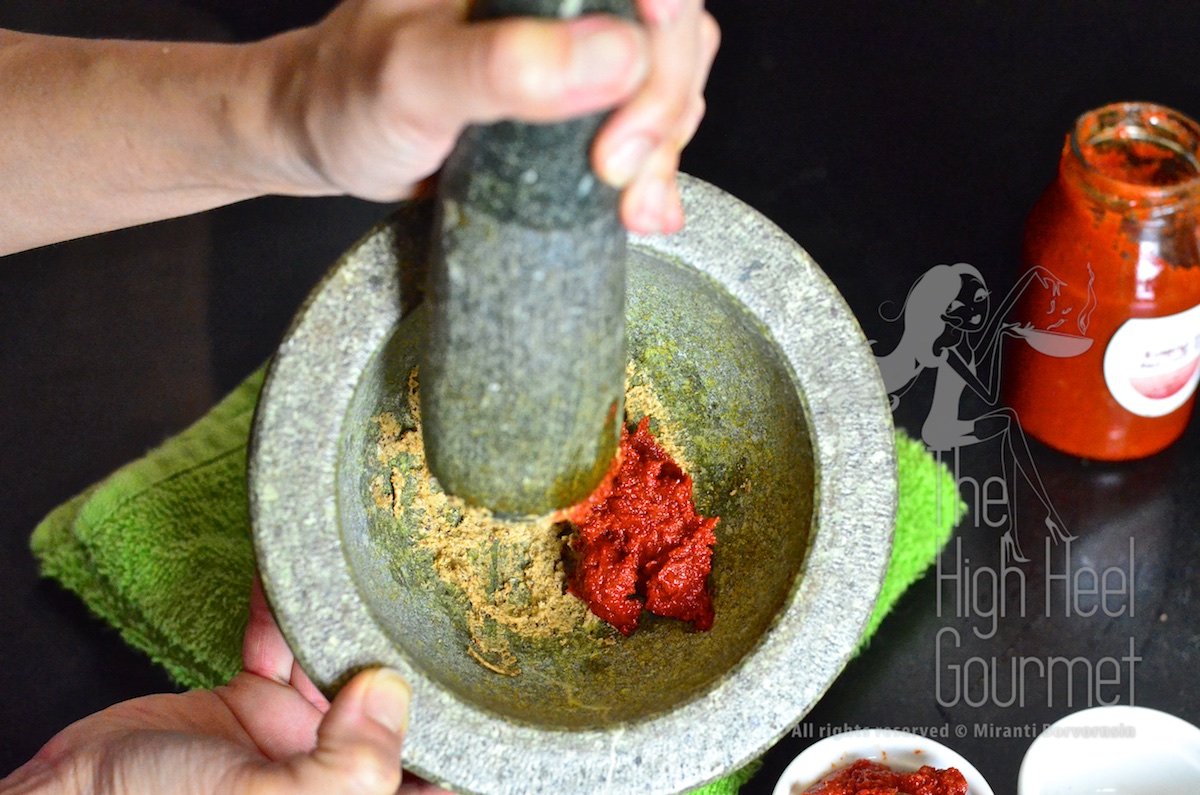
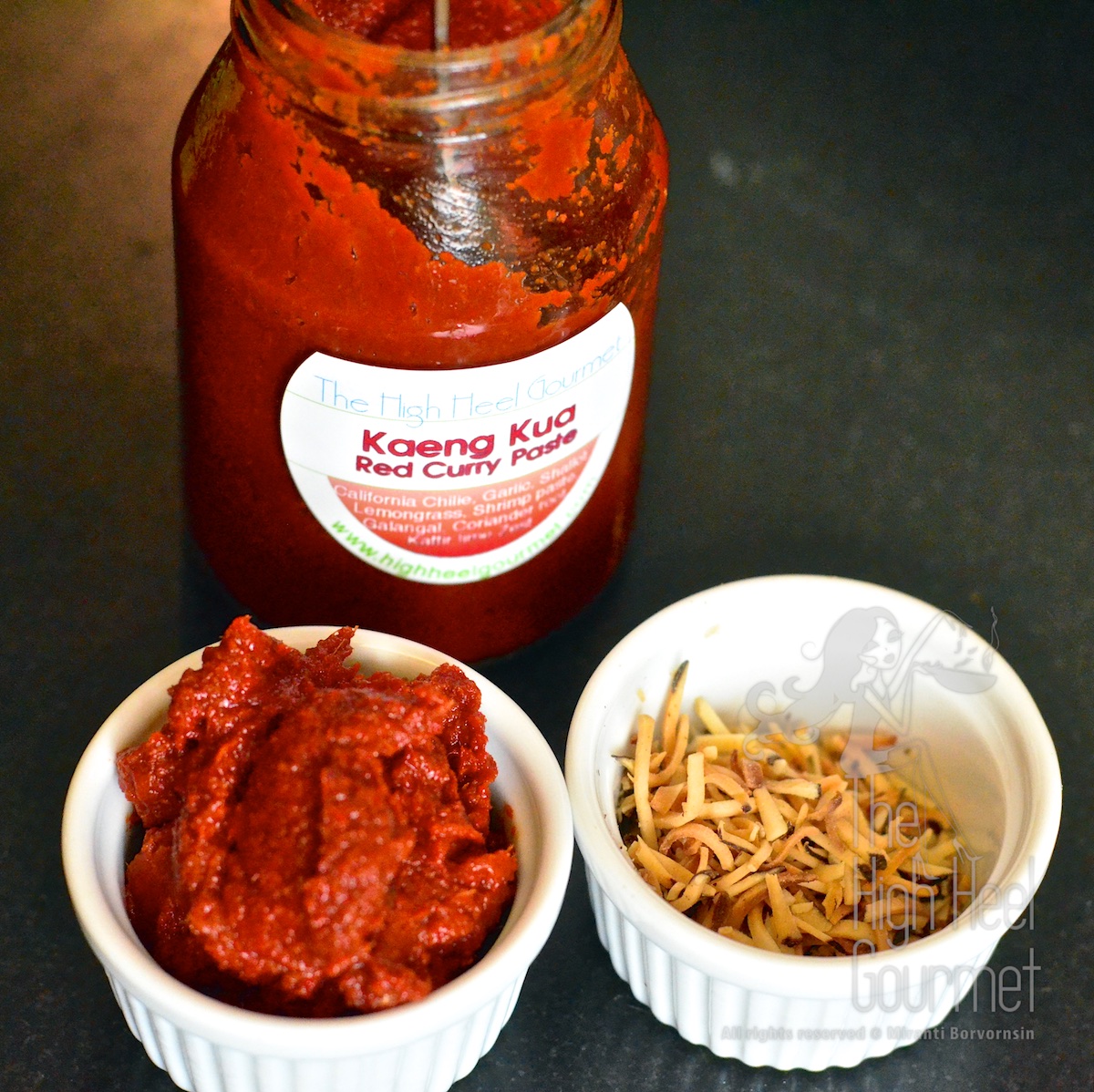
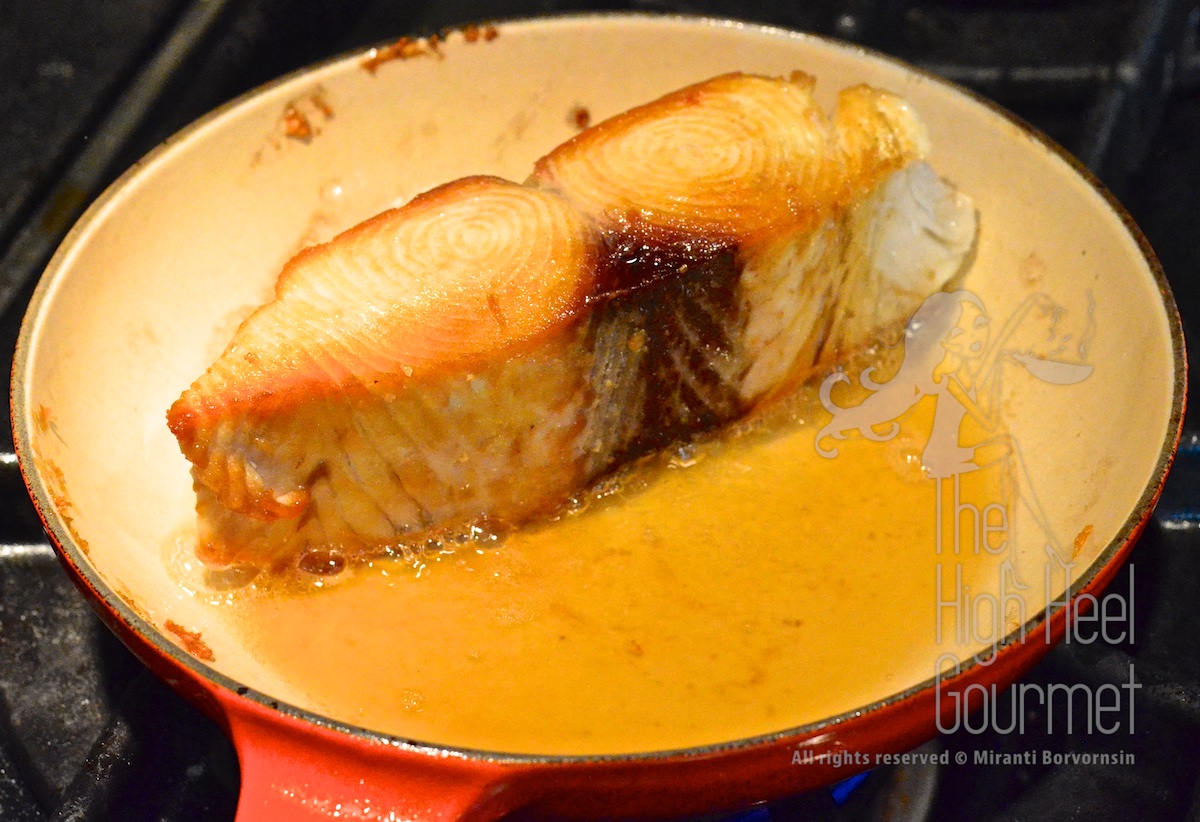
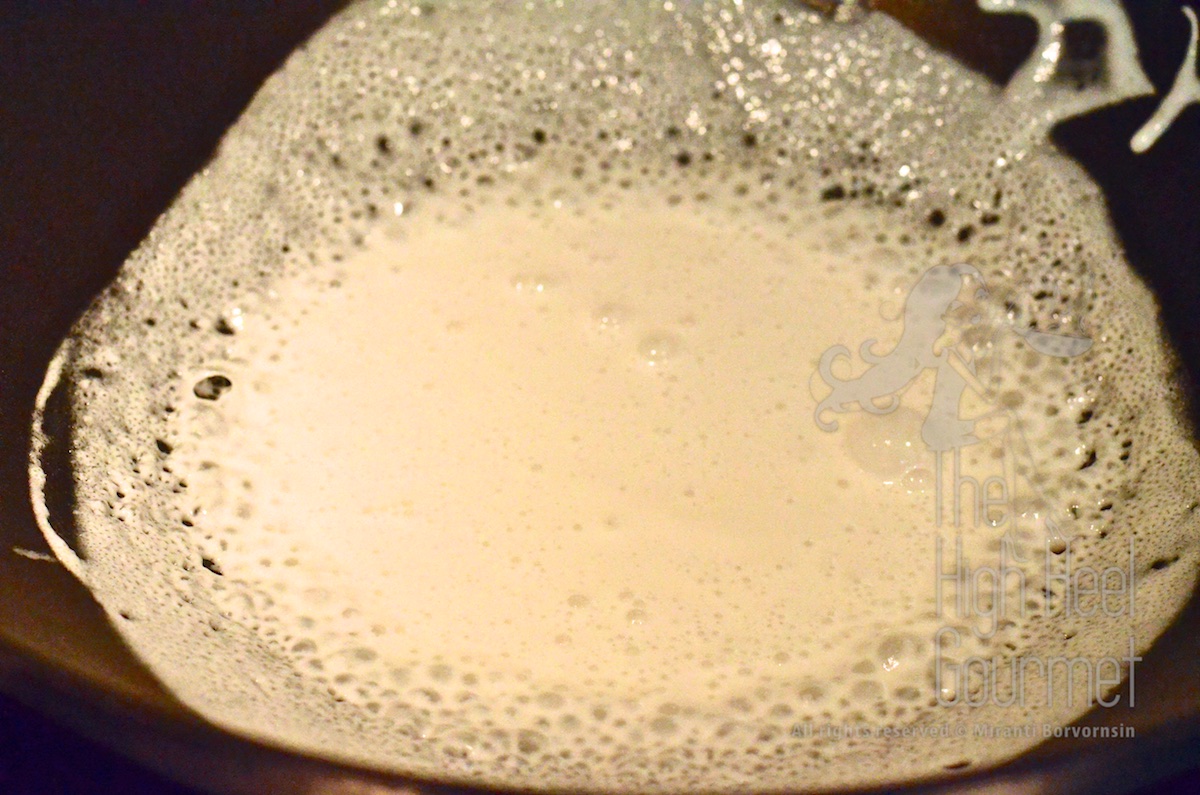
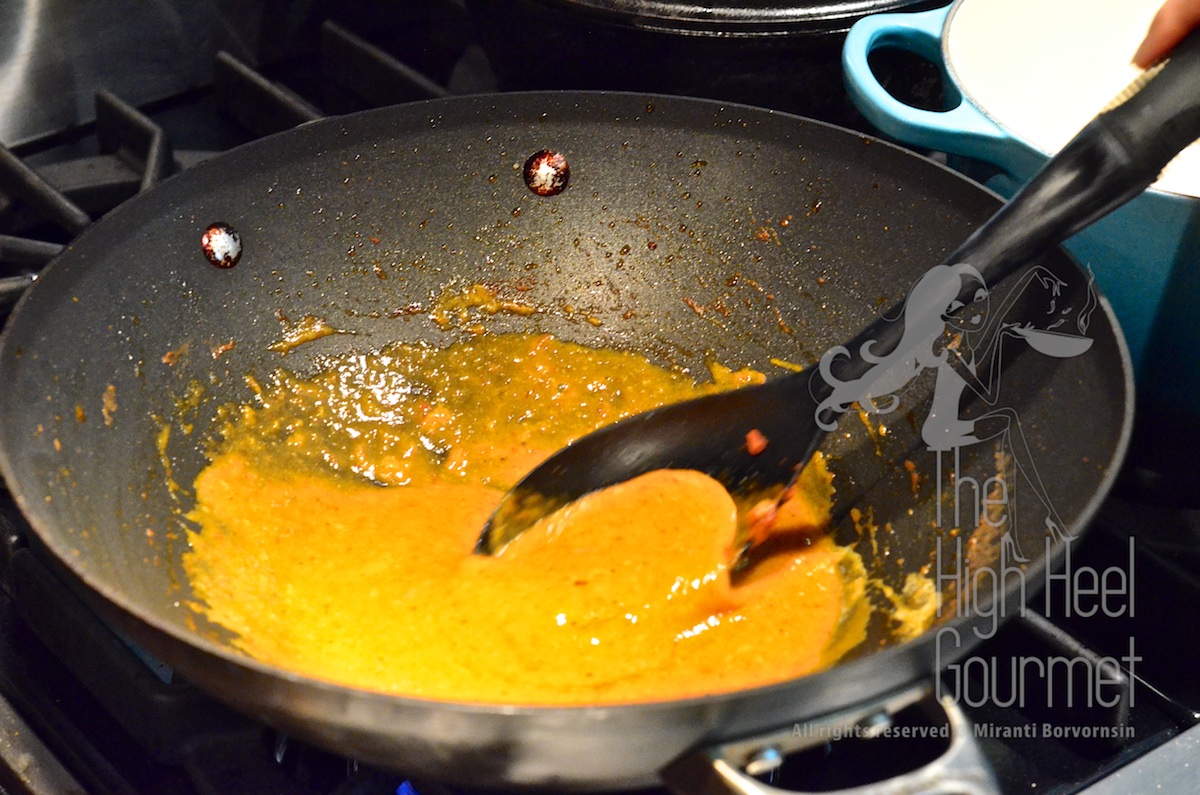
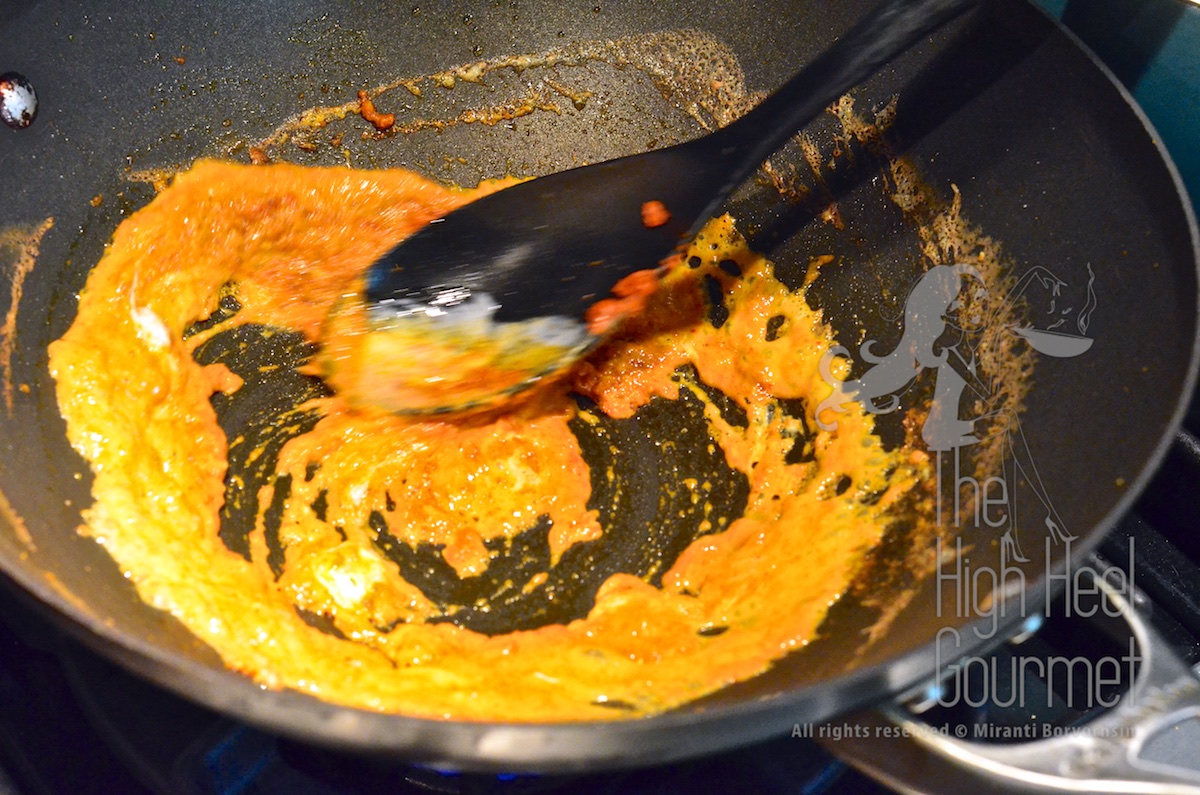
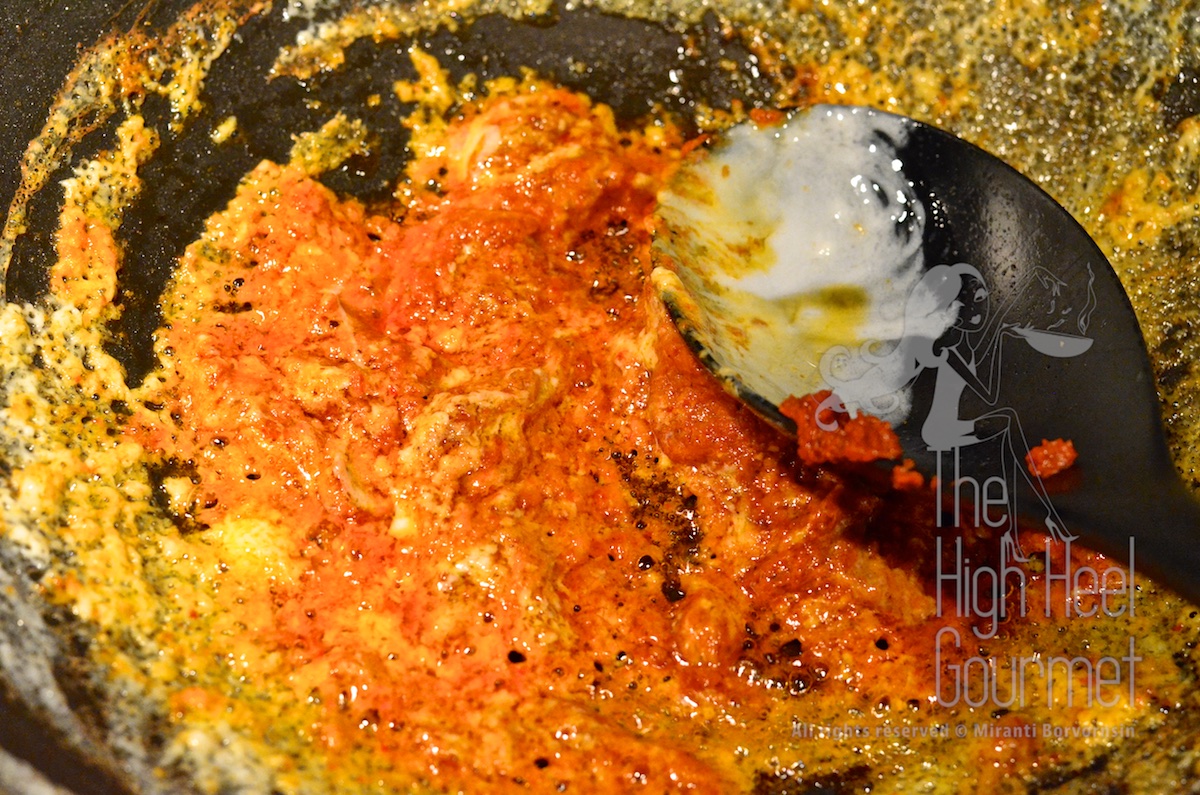
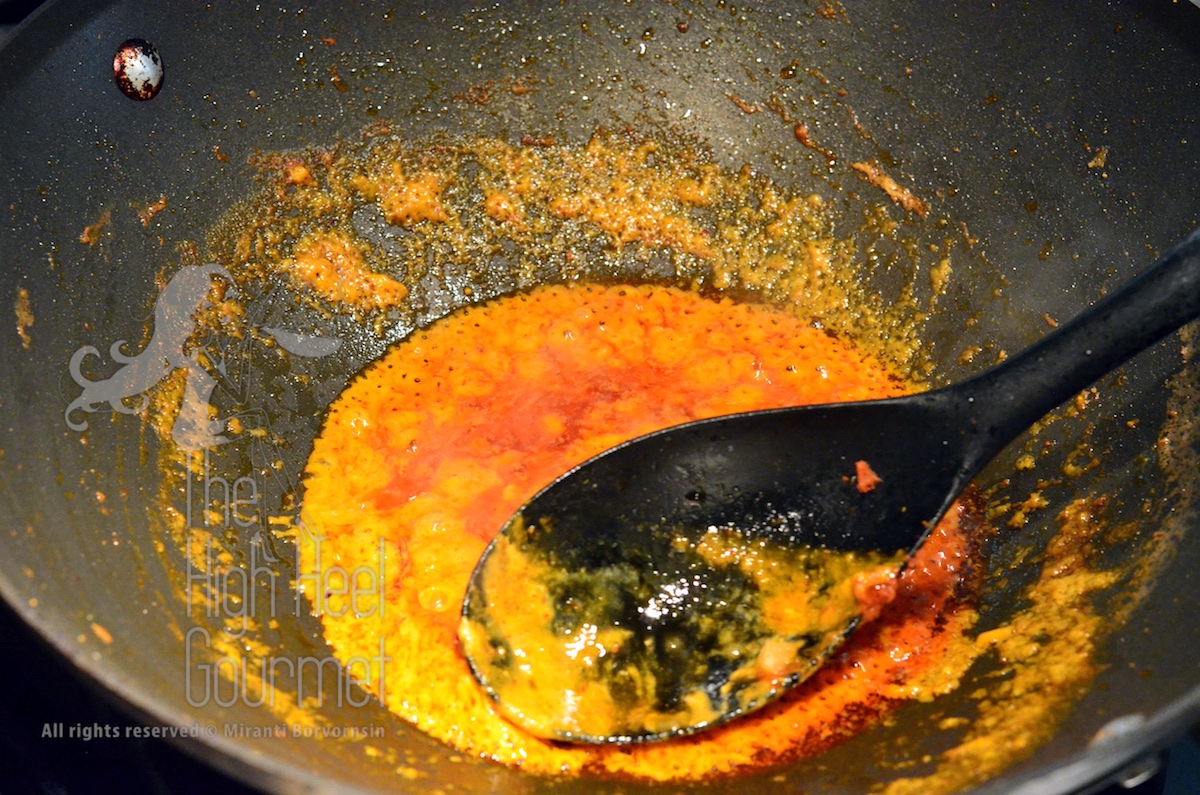
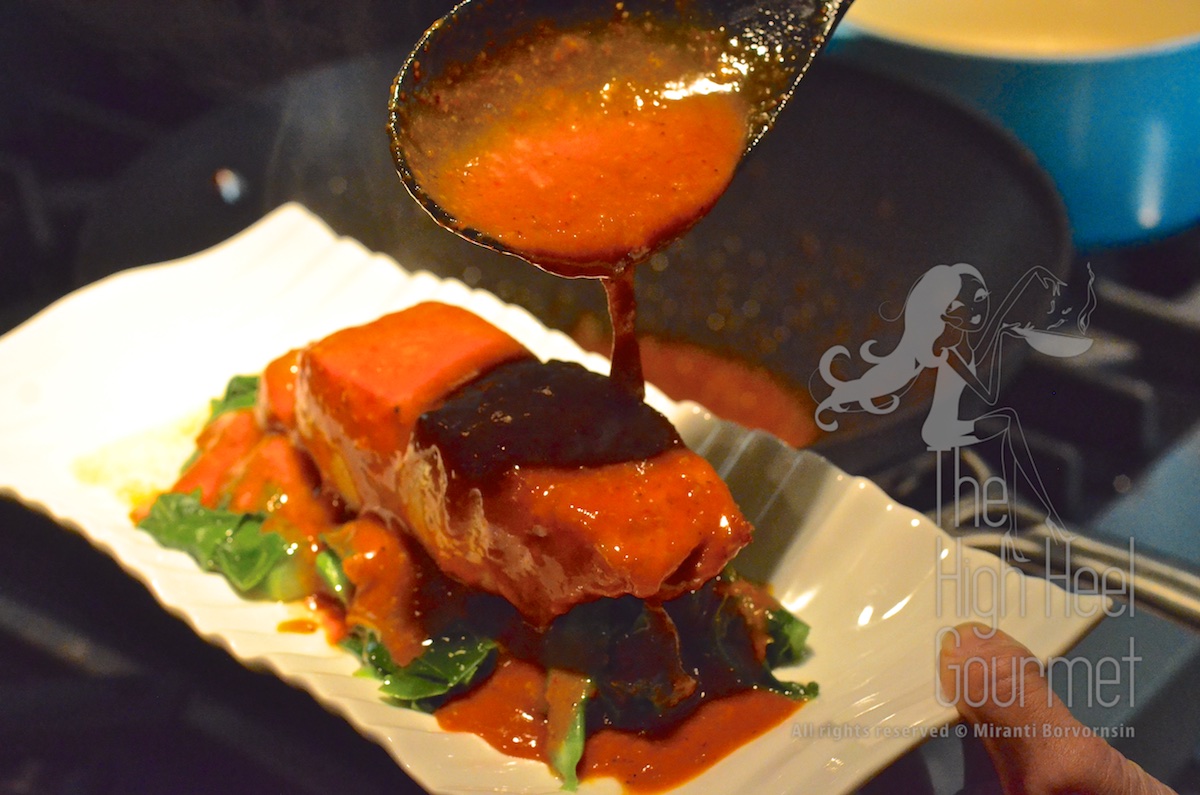
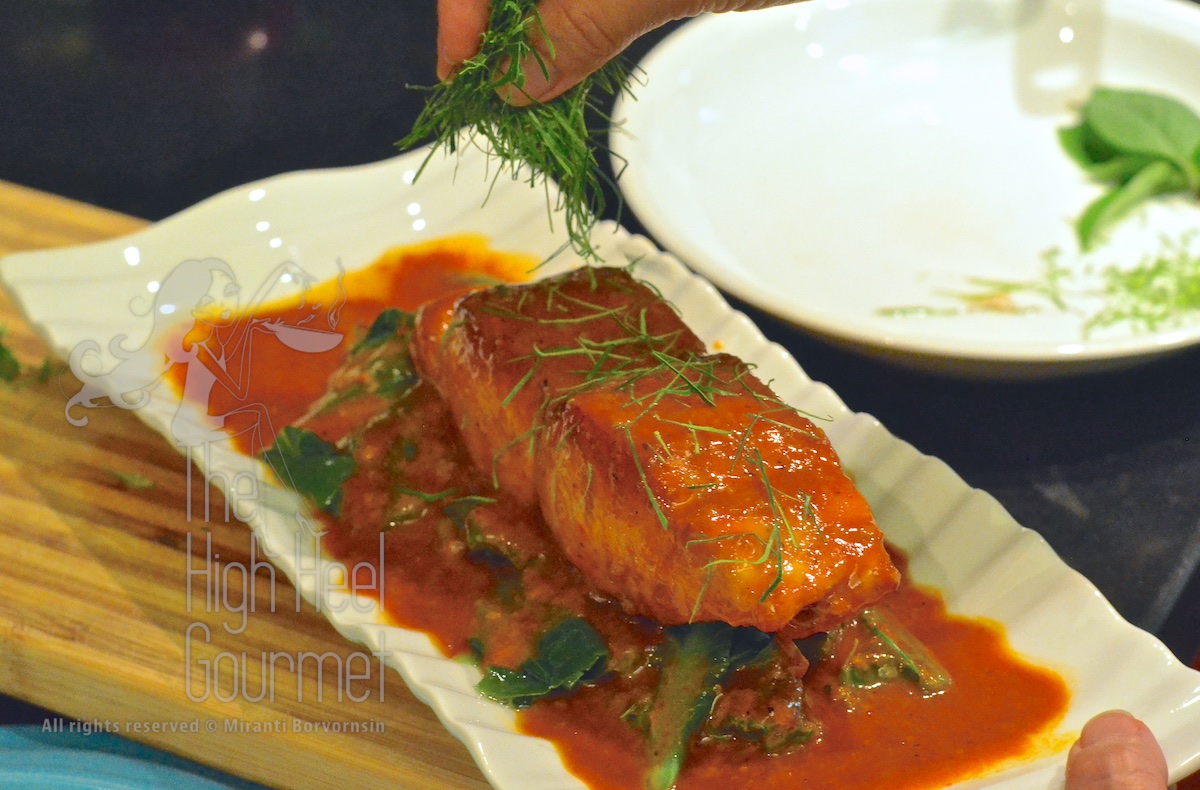
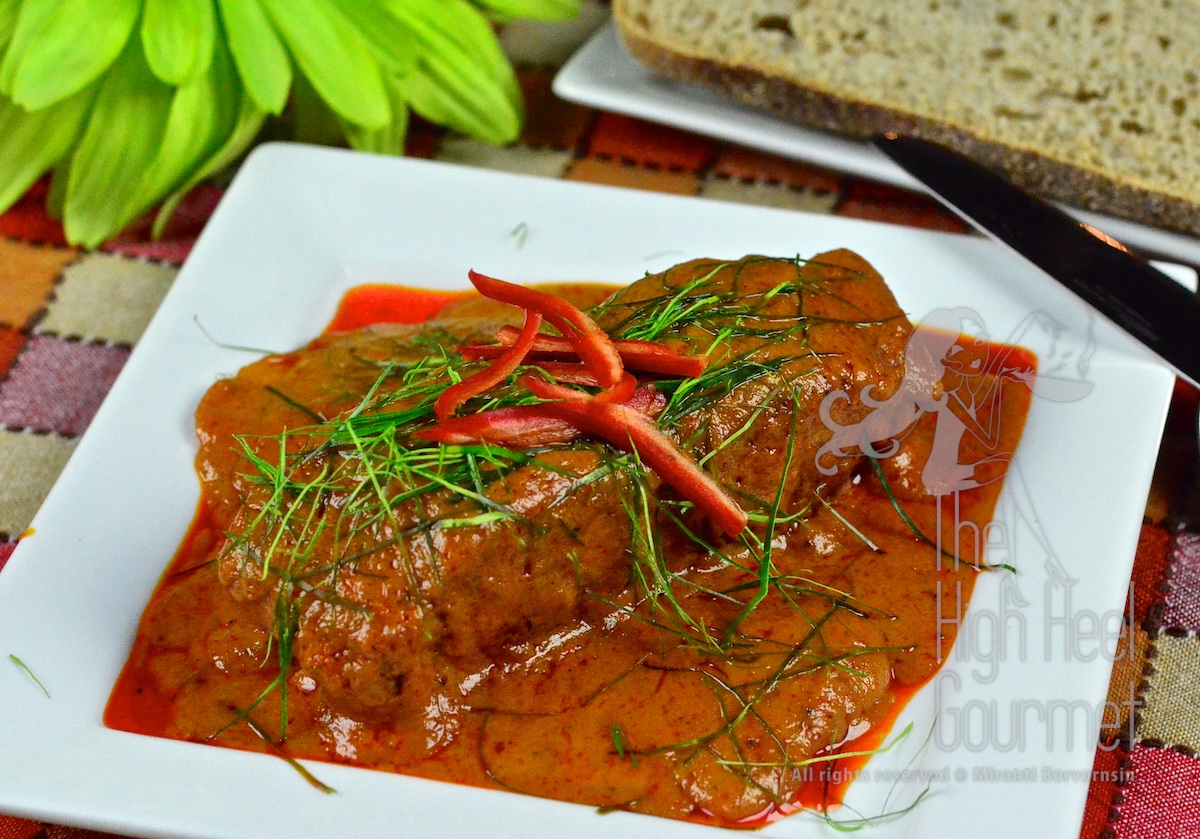
Your food, your understanding of food and your respect of food is exemplary. One of these day’s we will have to cook / eat together 🙂
Looks delicious. Your plating skills are excellent.
Unique recipe we will try it.Very special talent you have.jalal
the food, plating, photo — everything is perfect 🙂
That looks crazily delicious! 🙂
I love the idea of “swimming foods”, Miranti! I’m not ashamed to admit it: that’s how I regard live creatures that are just meant to be part of the scenery, eg carp swimming in a pond (“Oooh, that one’s big and fat, bet it’ll taste great with bean sauce”).
Wow that looks very good !:)
I like that you don’t just explain the recipe but also give some background theory.
Yum, swimming foods. I also have the same reaction to “swimming foods” as Feasting in the Know!
Looks wonderful.
Wow… The wahoo dish looks sooooo yummy! I don’t believe that is common here where I live but I can say this: before reading your blog, I had never known curry can go with so many foods! Thanks!
Reblogged this on This Got My Attention and commented:
Beautiful pictures and terrific instructions to make the delicious dish!
Reblogged this on U.S. Constitutional Free Press.
This looks so good!
awesome and looks so yummy…thanks for sharing
Reblogged this on The ObamaCrat™.
Reblogged this on Deo Optimo Maximo.
One of these days I’ll attempt your curry recipes. One of these days. *resolve*
What is the bed of green stuff that the fish is placed on top of?
Cooked broccoli stem
Would a fish like salmon be too strong for this recipe?
No. The curry is made to cover up the “fishy smell” of any seafoods. Salmon will work perfectly and you will like the combination of roasted coconut with the salmon.